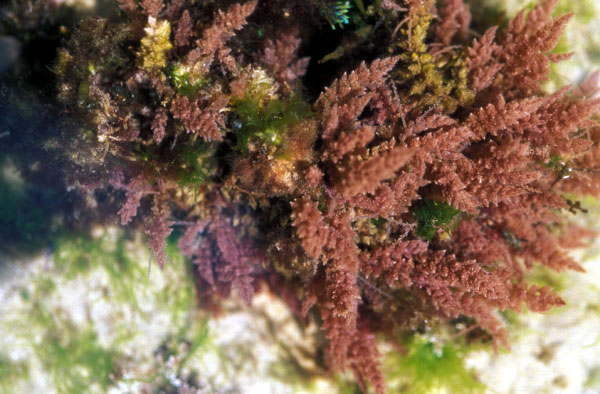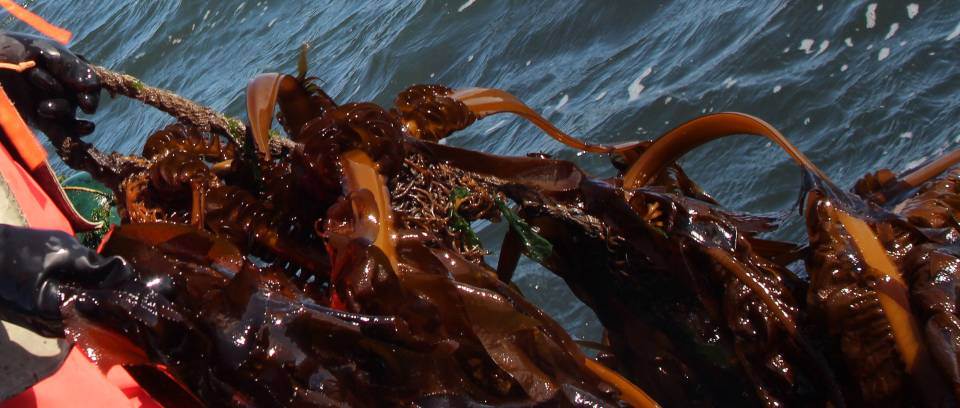University of Connecticut professor Charlie Yarish, also known as ‘Capt. Seaweed,’ is a leader in the emerging U.S. sea vegetable farming industry. (
Digital library
-
-
In the past, storm cast* seaweed was gathered on foot and without mechanization or any equipment. Since the beginning of the 17th century, the commercial use of seaweed, for commercial purposes, such as in the production of glass, encouraged local populations to regulate the activity by establishing rules. For example in France, the first national text, regulating seaweed harvesting, is an ordinance of 1681 which fixed the harvesting seasons of kelp and the number of authorized harvesting days. The use of seaweed for iodine production and later for alginate prompted improvements in harvesting techniques, in order to meet the increasing industrial demand industry for the raw material. Equipment to cut seaweed and boats to carry the algae ashore were first used early in the twentieth century. In 1970, harvesting of Laminaria digitata and Laminaria hyperborea was mechanized in France and Norway. In Europe, the main exploited algae species are Laminaria hyperborea, Laminaria digitata and Ascophyllum nodosum. These species, and especially kelp forests, are considered among the most ecologically dynamic and biologically diverse habitats on the planet. Other species are found on the European Atlantic coast but few of them currently have a commercial value. European scientists have mainly focused their research mainly on kelp which is considered a Keystone Species and whose presence affects the survival and abundance of many other species in the ecosystem. Nowadays, the preservation of kelp forests is placed at the center of environmental concerns and some countries have decided to protect these habitats by restricting the use of mechanical harvesting or by creating protected areas around them. Within this context, mechanical kelp harvesting and seaweed gathering by foot, generate much discussion between scientists, fishers, processing industries and environmental non-gouvernemental organisations. Kelp harvesting is blamed for harming the ecosystem because of the damage it can cause to substrates and to the habitats of certain fish. For some scientists the removal of the kelp species provokes negative effects on the invertebrate species that live in the holdfast, the stipe or fronds or under the fronds. In countries where Laminaria spp is harvested with mechanical equipment, scientists appear to be concerned with the equipment’s impact on the species and also on the surrounding ecosystem. This document presents the main characteristics of the seaweed industry in Europe, illustrated by examples from six European countries (Norway, France, Ireland, Spain, United Kingdom and Portugal). The aim is to have an overview of the European seaweed industry from the six baseline reports prepared by the partners of this project, from literature sources and information gathered during semi-structured interviews of different stakeholders. This document briefly presents the history of seaweed harvesting activity in Europe, the current production and the techniques used in the different countries. The different regulatory systems for the resource and coastal access are detailed followed by the management of the resource and finally the management of the human beings focusing on the social dimension of the activity. The diverse uses of the seaweed resource are outlined.
*material deposited on the shore after storms
-
The potential areas in India for luxuriant growth of seaweeds are south Tamil Nadu coast, Gujarat coast, Lakshadweep and Andaman Nicobar Islands. The total standing crop of seaweeds from Intertidal and shallow waters of all maritime states and Lakshadweep Islands was estimated as 91339 tons (wet WI.) The quantity of seaweeds growing in deep waters ofTamiJ Nadu was estimated as 75372 tons (wet wt) in an area of 1863 sq km from Dhanushkodi to Kanyakumari. Data were collected every month from 1978 to 1995 from the seaweed landing centres in Tamil Nadu on the quantity of seaweeds exploited from the natural seaweed beds. During this period the quantity of agar yielding seaweeds Gelidiella acerosa, Graci/aria edulis, G. crassa and G. foliifera exploited in a year varied from 248 to 1289 tons (dry wt).; algin yielding seaweeds Sargassum spp and Turbinaria spp from 651 5537 tons (dry wt) and all the above seaweeds from 1177 to 6420 tons (dry wt). Since several years, agar yielding red algae are over exploited in Tamil Nadu. The need for conservat ion of commercially important seaweeds of Tamil Nadu and time - table for their commercial exploitation are given. The harvesting of under exploited and unexploited seaweeds from Tamil Nadu and unexploited seaweeds from other parts of Indian coast are suggested.
-
This manual is designed for farmers, buying agents, exporters and fisheries officers who play an important role in achieving the required quality of seaweed for export. The purpose of the manual is to educate farmers to understand the importance of good-quality seaweed, the role they play and the benefits they can achieve. The manual also provides guidance for buying agents, exporters and fisheries officers in the roles they perform to improve and maintain the required quality of seaweed.
-
The macroscopic algae comprising the three major classes Ghlorophyceae (green alga<'), Phaeophyceae (brown algae) and Rhodophyceae (red algae), found mostly in the inter-tidal zone on the rocky coasts, are commonly referred as seaweeds. Recently their use as an industrial raw material in the production of agir and algin has created a great dem nd and attempts are under way to augment the resources by aquaculttire practices. The Central Marine Fisheries Research Institute is playing a leading role in developing the techniques of seaweed culture in the Gulf of Mannar and Palls Bay. A gross picture of the seaweed resources along the coasts of mainland of India is available (Thivy, 1958; Rao, 1967. 1970).
-
The deepwater seaweed resources survey was carried out during 1986-1991 at the depths ranging from 5 to 22 m in Tamilnadu coast from Dhanushkodi to Kanyakumari. The vegetation of seaweeds and sea grasses occurred in all areas except Dhanushkodi - Mandapam and Manapad – Kanyakumari. A total number of 100 algae and 5 seagrasses were recorded. Among the 100 algal species recorded, 20 species belonged to Chlorophyta, 18 species to Phaeophyta, 61 species to Rhodophyta and 1 species to Cyanophyta. The total estimated standing crop (wet wt.) from 1863 sq. km. sampled area was 75374.5 tonnes consisting of 2750 tonnes of Sargassum spp., 962.5 tonnes of Gracilaria spp., 5262.5 tonnes of Hypnea spp. and 66399.5 tonnes of other seaweeds. The quantitative analysis of economically important seaweeds revealed the feasibility of commercial exploitation of Sargassum from Mandapam to Kilakkarai and Tuticorin areas, Hyphnea from Mandapam to Vembar area and Gracilaria from Vembar to Nallatanni Tivu region. Hydrological data were, also collected from the area surveyed.
-
The southern coast of Tamil Nadu (Mandapam to Kanyakumari) supports luxuriant growth of economic seaweeds. The entire indigenous phycocoUoid industry of the country gets the raw material from this region and during the last two decades, due to indiscriminate harvesting, there has been over-exploitation of the resource. The present paper deals with survey conducted in the first sector from Tuticorin to Tiruchendur during December 1986—March 1987. In this study 58 species of marine algae were recorded of which 7 belong to Chlorophyta, 12 to Phaeophyta and 39 to Rhodophyta besides 3 species of seagrasses namely Cymodocea seiriilata, Halophila ovalis and //. ovata within 650 sq. km area surveyed. The total standing crop of the seaweeds was estimated at 9,100 tonnes (wt.). The estimates for the dominant species are Dictyota maxima 530 t, Sargassum tenerrium 640 t, D. bartayresiana 8601, Selieria rebusta 2,0901 and Hypnea valemiae 2,4301. The seaweed potential for commercial exploitation has been briefly discussed.
-
Survey of the deep water area from Kilakkarai (Appa Tivu to Rameswaram Island (Dhanushkodi) was undertaken from December 1990 to January 1991 in the IV Sector survey of Deep water Seaweed Resources off Tamil Nadu coast, which formed the last phase of the survey from Rameswaram to Kanyakumari carried out during 1986-91. An area of 417.5 sq.km. was surveyed yielding a total biomass of 18,162.5 tons (wet) seaweeds. Out of 167 stations surveyed in 13 transects, vegetation occurred only in 12 stations. Of the 29 species of marine algae recorded 8 belonged to Chlorophyta, 8 to Phaeophyta, 12 to Rhodophyta, and I to Cyanophyta, One species of seagrass Cymodocea serrulata was also recorded. Twenty species were found in estimable quantities, of which the following 8 species were abundant: Halimeda macroloba, Spatoglossum asperum, Zonaria crenata, Sargassum ilicijolium, Amphiroa fragilissima, Hypnea musciformis, Botryocladia leptopoda and Lyngbya majuscula with a biomass of 1325, 9775, 650, 1550, 1925,300,862.5 and 1012.5 tons (wet) respectively. The species of Hypnea and Sargassum could be exploited for the manufacture of phytochemicals.
-
Eating seaweed is a little alien to most people; and a large number of those who have experienced it have not yet graduated further than the nori sheets used to wrap sushi. Yet seaweed or marine algae – to give them their correct name – are bang on trend. There have been more than 29,000 micro algae and seaweed-based products launched into the consumer marketplace since 2010, half of which were launched in the past year. And it’s not just the specialist retailers that are cashing in; the major grocery chains are now stocking seaweed lines too. In the United Kingdom, for example, Marks & Spencer (M&S) rolled out seaweed-based products from three different brands nationwide in April. A month later, Tesco also launched a new range. Even celebrity chef Jamie Oliver has been publicly praising seaweed as a food – further stoking consumer interest.
-
Throughout human history, seaweeds have been used as food, folk remedies, dyes, and mineral-rich fertilisers. Seaweeds as nutraceuticals or functional foods with dietary benefits beyond their fundamental macronutrient content, are now a major research and industrial development concept. The occurrence of dietary and lifestyle-related diseases, notably type 2 diabetes, obesity, cancer, and metabolic syndrome has become a health epidemic in developed countries. Global epidemiological studies have shown that countries where seaweed is consumed on a regular basis have significantly fewer instances of obesity and dietary-related disease. This review outlines recent developments in seaweed applications for human health from an epidemiological perspective and as a functional food ingredient.





